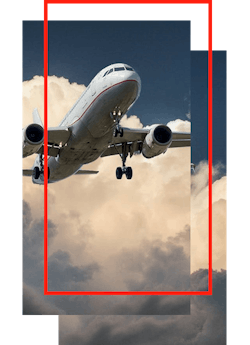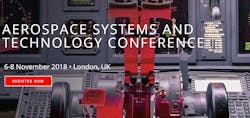Efficiency, connectivity, thermal management drive aircraft development
By James Sherman, Technical Conference Developer at SAE International
Introducing better connectivity, not only for passengers to access, but for airlines and maintenance technicians to increase the availability of the airplane and accuracy/timeliness of maintenance. New network architectures, processing platforms, and supporting infrastructure, both on board and off, will require airframers and suppliers to work together in unprecedented ways.
Form/fit/function architectures that meet maximum size/weight/power standards will not be a sufficient way forward. Integrated design systems, front-to-back verification/validation systems, that encourage real-time design changes that are communicated to all the necessary stakeholders will be required, and that means the infrastructure and tool providers will have to continue to work hard to meet these requirements.
With the increase in total bandwidth requirements, network architectures will need to be modernized, and will likely stray from proprietary or aerospace-unique protocols to adaptions of commercial/consumer technologies. Using more widely available networks adds risk: The security of the system could be more easily compromised, and that deterministic data flow is not guaranteed without careful planning and design.
These challenges are already being addressed in various versions of the Ethernet standards, including fiber-optic and wireless communications between flight critical systems, and maintenance interfaces.
To meet the increased demand for higher airplane efficiency, a more-electric approach has been increasingly used to achieve reduced overall power consumption. This approach allows for an on-demand approach, utilizing only the systems that need to be active when they need to be active. This has led the latest generation of airliners to included power generation capabilities that are large enough to power small neighborhoods, on the order of 1.5 milliwatts.
All this electrical power requires new architectures and systems to generate, manage, and control the flow of electricity throughout the airplane, including transmission and storage of energy. There are more benefits that will be realized by having additional electrical power available, such as unpowered taxiing, self-power at the gate, and electric de-icing.
The SAE Aerospace Systems and Technology Conference (ASTC) program provides industry-leading technical content with sessions on networking architectures, fiber optics, and DO-178 certification.
From the military point of view, more-electric aircraft provide options for design optimization of the aircraft in ways that were previously unachievable, and giving the pilot more control and therefore a greater advantage.
All this electrical power, while more efficient, does generate a significant amount of heat in places that historically have not had significant amounts of thermal energy. This challenge is leading to the development of novel thermal control concepts to ensure that the structural integrity of the airplane is maintained, and that temperatures, especially in the passenger space, are maintained at safe levels.
Again, from the military point of view, thermal dissipation of heat is incredibly important for maintained low-observables and heat signatures. The SAE AE-7 committees have been working on this problem, and present their findings regularly at ASTC.
The Aerospace Systems and Technology Conference is back for its fourth edition, and this time in Europe. The event will continue to feature Power Systems and Avionics technology-in-transition topics, including new topics that are under development. Presentations will include current research, ongoing development efforts, past successes, and existing or perceived future approaches to fielding new technologies from the user perspective for commercial & military aerospace and other aerospace system applications.
More information is onine at http://astc18.org/
The go-to resource for Intelligent Aerospace technology news & information:
Covering key topics
Across all market segments
Subscribe to the free Intelligent Inbox e-newsletter: http://www.intelligent-aerospace.com/subscribe.html.
Connect on social media:
Keep pace with aerospace innovation and opportunities via your favorite social media channels. Connect with Intelligent Aerospace on Twitter (@IntelligentAero), LinkedIn,Google+, and Instagram.



